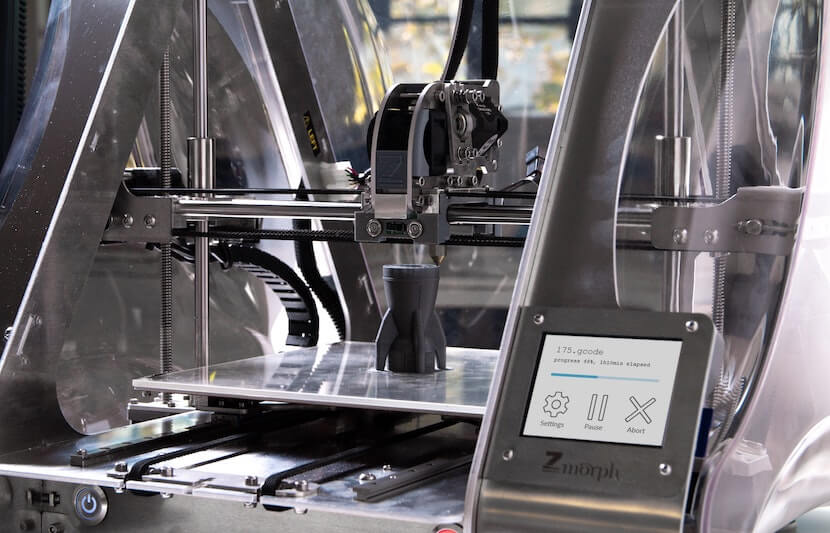A research team from the Collaborative Robotics and Intelligent Systems Institute at Oregon State University’s College of Engineering have developed a method for modified, 3D-printable metal alloy. This development could lead to the rapid manufacture of stretchable electronics, including flexible computer screens and soft robots.
The study is published in the journal Advanced Materials Technologies.
The research team used sonication — the energy of sound — to put nickel nanoparticles into galinstan, a liquid metal alloy. The process thickens the galinstan into a paste with a consistency suitable for additive manufacturing.
This method enables the 3D printing of tall, complex structures with a highly conductive gallium alloy. Prior to this development, the gallium alloy was too runny to print three dimensionally.
“The runny alloy was impossible to layer into tall structures,” Yiğit Mengüç, an assistant professor of mechanical engineering at OSU and co-corresponding author on the study, said in a statement.
“With the paste-like texture, it can be layered while maintaining its capacity to flow, and to stretch inside of rubber tubes. We demonstrated the potential of our discovery by 3D printing a very stretchy two-layered circuit whose layers weave in and out of each other without touching.”
Gallium alloys have low toxicity and good conductivity, and are inexpensive and “self-healing,” meaning they are able to reattach at break points. As a result, gallium alloys are already commonly used as the conductive material in flexible electronics.
Before this team’s development, the use of gallium alloys was restricted to 2-dimensional printing by its runny texture. By developing a 3D-printable gallium alloy, this team has changed the way liquid metals can be used in the manufacture of flexible technologies.
“In the current state of the art, liquid metal material is only injected into silicone microchannels or sprayed over,” said Doğan Yirmibeşoğlu, a robotics doctoral student at OSU and co-author of the study.
“We wanted to use additive manufacturing for depositing liquid metal so that we can generate much more complex soft sensors.”
For this study, the researchers used the newly-developed alloy to print structures up to 10 mm high and 20 mm wide.
“Liquid metal printing is integral to the flexible electronics field,” Yirmibeşoğlu said in a statement.
“Additive manufacturing enables fast fabrication of intricate designs and circuitry.”
The 3D-printable paste boasts a variety of features that could benefit the field of flexible electronics.
“It can be made easily and quickly,” Uranbileg Daalkhaijav, a doctoral candidate in chemical engineering at OSU and co-corresponding author, said in a statement.
“The structural change is permanent, the electrical properties of the paste are comparable to pure liquid metal, and the paste retains self-healing characteristics.”
The development could pave the way for the manufacture of a range of products, including wearable technology, bendable displays, antennae, and biomedical sensors.
The researchers intend to investigate some of the features of the paste. They will explore the exact structure of the paste, how the nickel particles are stabilized, and how its structure changes over time.
They hope that this development could lead to the creation of fully-functional, 3D-printed soft robots.
“Our next step is to combine this 3D liquid metal printing method with soft material printing so that we can fabricate soft robots that will function right after the print is done,” said Yirmibeşoğlu.



